About a month ago, Apple announced their latest flagship smartphone lineup at the company’s annual September iPhone launch event. For the first time ever, not just two, but three new iPhones were unveiled, namely the iPhone 8, iPhone 8 Plus and the bezel-less iPhone X. Although Apple managed to woo the audience with the iPhone X’s radical redesign, there was nothing revolutionary about the iPhone 8 and iPhone 8 Plus to make it more desirable. That’s right, the new iPhone 8 Plus is an evolutionary change rather than a revolutionary one, pretty much because it sticks to the four-year old design that Apple has been following since the iPhone 6. That’s not to say that there’s nothing new in the iPhone 8 Plus. In fact, the smartphone has received its fair share of upgrades that will certainly get you excited. Well, if you’re planning to upgrade to the latest and biggest iPhone that Apple has to offer, you”ll be keen on knowing all its new features and improvements. So, without further ado, let’s find that out in our in-depth review of the Apple iPhone 8 Plus:
iPhone 8 Plus Specifications
Before we proceed to the important and exciting part, let’s take a look at what the iPhone 8 Plus offers on paper:
| Dimensions | 158.4 x 78.1 x 7.5 mm |
| Weight | 202 g |
| Display | 5.5-inch IPS LCD True Tone Display (1920x1080p) resolution at 401 ppi, 3D Touch, |
| Processor | A11 Bionic chip hexa-core CPU clocked at 2.5 GHz, Embedded M11 motion co-processor |
| RAM | 3GB |
| Storage | 64GB and 256GB |
| Primary Camera | Dual 12MP cameras, 1x wide-angle lens with f/1.8 aperture and 1x telephoto with f/2.8 aperture, 2x optical zoom, OIS. |
| Secondary Camera | Single 7MP |
| Battery | 2675 mAH |
| Water and dust-resistance | IP67-certified |
| Sensors | 3-axis Gyro, Accelerometer, Proximity sensor, Ambient light sensor, Barometer |
| Connectivity | LTE-A, nano SIM slot, GPS, Wi-Fi b/g/n/ac with MIMO, Bluetooth 5, VoLTE, Wi-Fi Calling, Lightning |
| Colors | Space Grey, Silver, and Blush Gold |
| Price | Starts at $799 |
What’s In The Box
Apple’s minimalistic packaging for their products has always been something that even the competitors absolutely love. Well, you can bash on iPhones as much as you want, but the unboxing experience of an Apple product is always a class apart. Let’s take a look at everything that Apple provides along with the iPhone 8 Plus in the box:
- Apple iPhone 8 Plus
- Power Adapter
- Lightning Cable
- Apple EarPods
- Lightning to 3.5 mm dongle
- SIM ejector tool
- Instruction Manual
- Apple stickers
Design and Build Quality
Let’s start off with the design of the latest iPhone. In the year of bezel-less smartphones that boast an impressive screen-to-body ratio of above 80%, we’re looking at an ageing design that we’ve seen on the past 3 iPhones, starting with the iPhone 6 Plus. Sure, when Apple originally showed the design of the iPhone 6 Plus in 2014, we were all impressed, but when you compare it side by side with this year’s smartphones like the Galaxy S8 and Note 8, the big forehead and chin on the iPhone 8 Plus is disappointing to say the least.

Apple has still managed to tweak the design a little bit and introduced a glass back on the latest iPhone. We’re pretty sure that wireless charging is the primary reason behind this change, but this is a welcome addition nevertheless. It’s worth noting that the glass on the back has been reinforced with the help of a metal frame that’s made of 7000-series Aluminium, the same material used on the iPhone 6S Plus as well as the iPhone 7 Plus. As a result, the company gets to call it “the most durable glass ever in a smartphone”. The glass-back actually makes the iPhone 8 Plus one of the most vulnerable smartphones to date, almost matching the likes of the Samsung Galaxy S8.

Well, there’s actually one good thing about not having a bezel-less screen and that’s the presence of a home button which houses the Touch ID fingerprint scanner. This is something that the premium iPhone X had to sacrifice to achieve a bezel-less design. So, you don’t have to worry about the speculations surrounding Apple’s new Face ID security measure at all. That being said, the iPhone 8 Plus lacks a headphone jack just likes its predecessor, and we don’t think you’ll see one in any of the future iPhones either. Thankfully, the company does include a lightning to 3.5 mm dongle just in case you intend to use your existing headphones rather than the one that’s provided in the box.
Display
You’ve probably seen several Android flagships packing AMOLED displays with QHD (2560 x 1440 pixels) resolution in the past couple of years. Unfortunately, the new iPhone 8 Plus neither packs an AMOLED panel nor a higher resolution display. In fact, Apple has been sticking with the same Full HD IPS LCD panel since the iPhone 6 Plus that was launched in 2014. Well, this is quite disappointing to say the least, as the upcoming $999 iPhone X packs both an OLED panel and a higher resolution display.
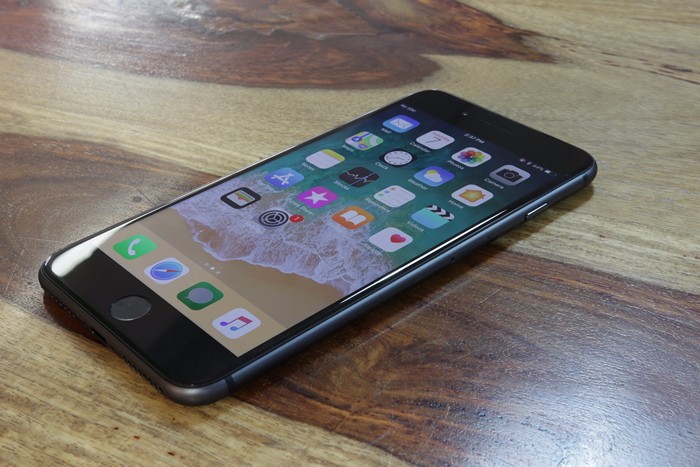
Having said that, the display on the iPhone 8 Plus packs the company’s “True Tone” technology. This has been made possible with the help of front-facing sensors that measure the ambient light color and brightness. This is a feature that was originally introduced alongside the iPad Pro that launched earlier this year. It’s functioning could be easily confused with iOS’ Night Shift mode that makes use of the device’s clock as well as geolocation to automatically adjust the color temperature of the display.
As a result of this new true tone display, there’s a significantly lesser strain on the user’s eyes. However, if True Tone is not really your thing, it can be easily disabled in the Settings, so it’s not really something that you have to stick with. Apart from the True tone display, the latest Apple flagship support DCI-P3 wide color gamut, which makes the color reproduction noticeably better in comparison to traditional IPS LCD screens.
User Interface
Now, let’s move on to the software side of things. Apple always boasts about how well their software integrates with the hardware, and to a certain extent they’re right. Afterall, there’s no fragmentation in iOS unlike Android, and therefore, most of the applications available on the Apple Apps Store are fully optimized for their devices. Personally, this is one of the main reasons why I prefer iOS over Android. The iPhone 8 Plus ships with the latest version of iOS 11 out of the box, and it comes with tons of new nifty features and improvements.
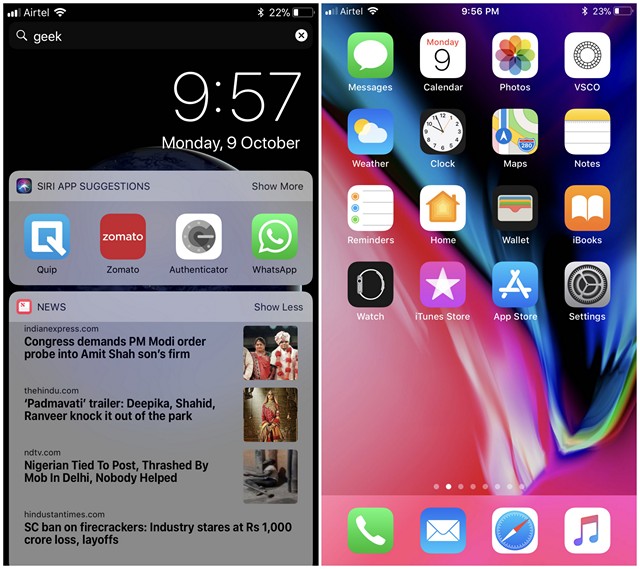
The first major change that you’ll notice in iOS 11 is the revamped Control Center, which is fully customizable in Settings. Users can add various nifty toggles like Screen Recording, Do Not Disturb While Driving, Apple TV Remote, etc. to the Control Center. The lock screen has also received a noticeable change, which now lets you swipe up all the recent notifications. The App Store is another area which has received a redesign, as it now features bold texts all over and once you open it up, you’re greeted by an all-new Today section. Additionally, if you’ve been making use of Apple Pay, you’ll be pleased to know that iOS 11 brings peer-to-peer payment, so sending money to your contacts is now a piece of cake.
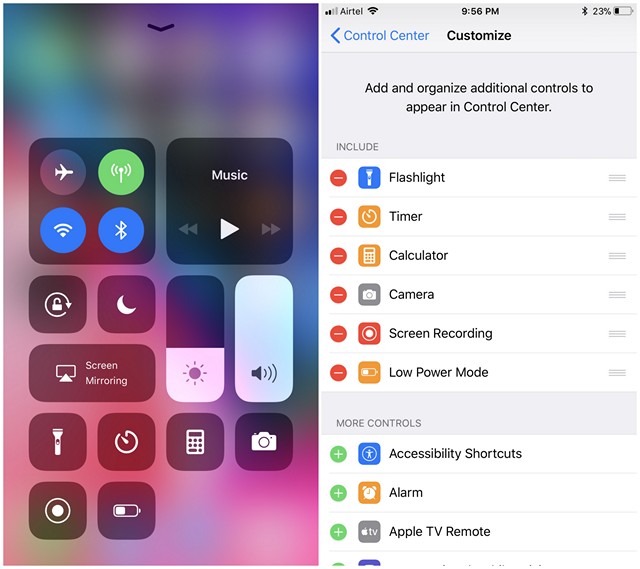
Apple’s latest iOS 11 also introduces a new image format to conserve your iPhone’s storage space. It’s called High Efficiency Image Format and it manages to reduces the size of your photos without any sacrifice on image quality. Personally, I think this can come in handy especially if you have an iPhone with 32 or 64 GB of storage space. That being said, this new format has its fair share of compatibility issues, but it’s not really a biggie because you can enable or disable it at your will.
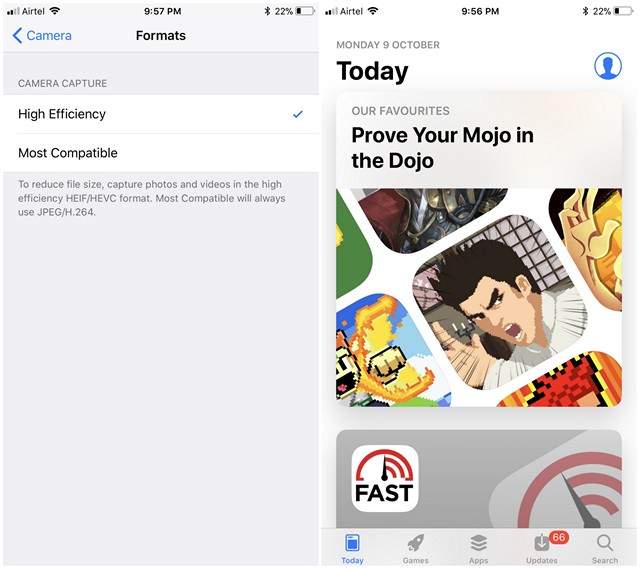
All in all, iOS 11 gives you the similar iconic experience that the company has been providing in the recent years, and with plenty of improvements, the highly optimized mobile operating system just got better. If you’re upgrading from an older iPhone, you’ll certainly not be disappointed with all the new features and tricks that the latest version has to offer. However, if you’re planning to switch from an Android device, you should be aware of Apple’s locked-down ecosystem and the lack of broad customizability.
Performance
Apple has maintained an impressive track record when it comes to delivering top-notch performance on their iPhones, and the iPhone 8 Plus is no exception in this department. According to Apple, the company’s latest flagship houses “the most powerful and smartest chip ever in a smartphone”. That’s right, the device is powered by the A11 Bionic chip, which is a hexa-core processor with 4 efficiency cores that are up to 70 percent faster and 2 performance cores that are up to 25 percent faster than the A10 Fusion chip that powered last year’s iPhone 7 Plus. It’s worth noting that this is the same processor that’s found even on the premium iPhone X that starts at $999, so you’re not sacrificing anything in terms of performance by opting for the 8 Plus.

Being the first 6-core processor that Apple has to offer, the A11 Bionic chip has managed to crush the numbers on Geekbench. In fact, it has put every other Android flagships, including the Samsung Galaxy S8, Note 8 and OnePlus 5 which are powered by Qualcomm’s top-of-the-line Snapdragon 835 processors to shame. We ran the Geekbench test on both our iPhone 8 Plus as well as the Galaxy S8 to see who comes out on top, and we’re pretty confident that the results will leave you spellbound. When it comes to single-core performance, the iPhone 8 Plus managed to score 4261 on Geekbench, whereas our Galaxy S8 barely managed to cross the 2000 mark. Moving on to multi-core performance, the Apple flagship crossed the 10,000 barrier without breaking a sweat whereas the Galaxy S8 managed a meagre 6605 despite packing two additional cores in its Snapdragon 835 octa-core chip.
Having said that, when it comes to real-world performance, you wouldn’t notice much difference between the iPhone 7 Plus and iPhone 8 Plus, unless you compare it side-by-side. Thanks to iOS 11 optimizations, our iPhone 8 Plus feels snappy at all times no matter what intensive application we throw at it. Although there are barely any iOS apps that can fully stress and unleash the true potential of the Bionic chip at the moment, having such a powerful chip is still an essential way to future-proof the smartphone, so that it doesn’t start to slow down in the long run after future iOS software updates.
Cameras
Apple has been constantly trying to improve the cameras on their iPhones in the recent years and this year is no exception in that regard. This is one major reason to upgrade to the iPhone 8 Plus, especially if you’re still using an iPhone that’s older than the 7 Plus. Well, the dual-camera setup was introduced last year alongside the iPhone 7 Plus, but the Cupertino-based company has managed to further improve and refine the camera with the iPhone. In fact, the camera on the iPhone 8 Plus received a score of 94 on DxOMark, making it one of the highest rated smartphones matching the likes of Samsung Galaxy Note 8. Well, we’re pretty excited to see how our iPhone 8 Plus fares against the recently-unveiled Google Pixel 2 as soon as it arrives at our office, as that’s the highest rated smartphone camera to date by DxOMark with an exceptional score of 98.
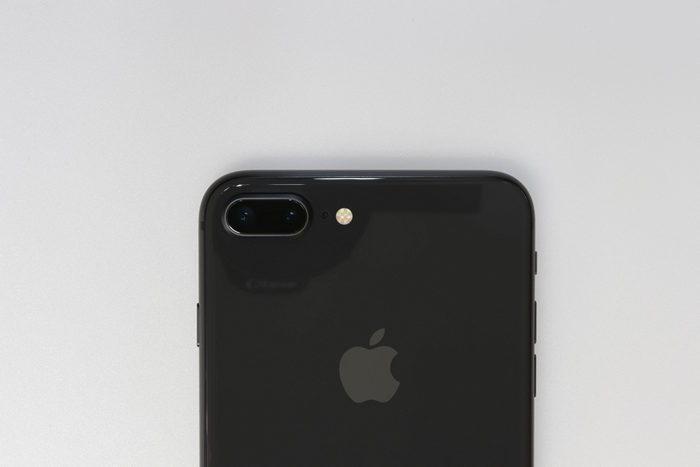
On paper, the iPhone 8 Plus retains the same 12 MP dual-camera setup with an aperture of f/1.8 for the wide-angle lens and f/2.8 for the telephoto lens just as last year’s iPhone 7 Plus. However, we did notice a significant improvement from the results that we obtained, especially when it comes to low-light conditions. It’s safe to say that Apple finally managed to get the white balance right in the photos taken with the 8 Plus, which might be due to the new color filter inside the lenses that the company boasted about. The photos aren’t overexposed and colors look natural rather than over-saturated. There isn’t much post-processing involved compared to Samsung’s recent flagships, so most of the image detail is well-preserved.



The Portrait mode is still here, thanks to the dual-camera setup and it’s now better than ever. That’s right, the bokeh effect in low-light can be considered as a step up from the 7 Plus primarily due to the improved Sony sensor, and the results are noticeable when you try to take a portrait photo in dim lighting conditions, thanks to reduction in noise-levels. In addition to Portrait mode, Apple has introduced an all-new software-based trick called “Portrait Lighting” along with the iPhone 8 Plus. It’s currently in beta, but it kind of feels gimmicky so far, just because it’s hard to get it right. However, if you managed to get it right after multiple attempts, there’s no doubt that you’ll be impressed with the results.


Portrait Lightning brings five new lightning effects to the table that you can play with. First one, called “Natural Light” is the default Portrait mode photo that you’ve seen on the 7 Plus already. The second one, called “Studio Light” adds an even soft spread of light over the subject to replicate the lighting you might get in a studio. “Contour Light” manages to add shadows and highlights to contour the face of the subject, which looks pretty neat in my opinion. However, the next two modes called “Stage Light” and “Stage Light Mono”, which blackens the background are a bit tricky to work with and get them right.
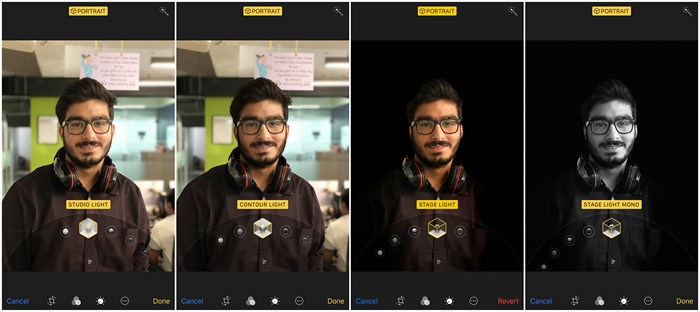
As far as the secondary front-facing selfie camera is concerned, the iPhone 8 Plus sticks with the same 7 MP sensor with an f/2.2 aperture that does a great job in taking some sharp selfies. Not everyone might like the way the 8 Plus preserves all the details, especially due to the fact that it does not do a good job in hiding your face marks and acne spots with post-processing. Additionally, since the iPhone 8 Plus lacks the True Depth camera system, it won’t be able to take Portrait photos using the front-facing camera like the upcoming iPhone X. Lastly, when it comes to video recording, you’ll be pleased to know that the iPhone 8 Plus is capable of recording 4K footage at a buttery smooth 60 fps, which is a first for any smartphone camera. So, if vlogging is one of your hobbies, you’ll certainly enjoy shooting videos on the latest Apple flagship.
Telephony & Audio Quality
If you’re upgrading from any recent iPhone, it’s safe to say that you wouldn’t notice any change in terms of call quality, as its quite similar across all the devices. So far in my usage, I haven’t faced any call drops or call quality issues so far, and both sides could hear each other without any problem. So, this is definitely not the department that you should be concerned about.

When it comes to audio quality, you’ll be glad that Apple didn’t ditch the stereo speakers that were introduced with the iPhone 7 Plus. So, expect louder sound while listening to music or watching movies without any distortion when it comes to quality. Just like its predecessor, the latest Apple flagship makes use of the earpiece in tandem with the bottom speakers to smartly achieve the stereo sound, which is impressive to say the least. That being said, there’s no headphone jack again. However, Apple provides EarPods with Lightning connector and a Lightning to 3.5 mm dongle in the box in order to listen to music, so the situation is not nearly as worse as you think. Bluetooth headsets or Apple’s own truly wireless AirPods are other options that you can take advantage of as well.
Connectivity
We’ve seen recent Android flagships like the LG V30 and Galaxy Note 8 packing hybrid SIM card slots that lets you install up to two SIM cards or use a SIM card along with a micro SD card. Unfortunately, the iPhone 8 Plus just like every other iPhone that has been released in the past, lacks any such capability thereby making it a single-SIM device. Lack of expandable storage space can’t really be considered as a major problem since the smartphone is also available in a 256 GB variant which is plenty for storing all your media files. The plastic antenna band located on the 7000-series aluminium frame allows you to get a clear network reception, so there are no worries in this regard.

The iPhone 8 Plus supports most of the LTE bands to make sure you’re connected even while you’re travelling around the world. In the United States, the latest Apple flagship will be able to take advantage of LTE-Advanced and carrier aggregation as long as the carrier supports it, so you can enjoy benefits like faster mobile data on your brand-new iPhone. Apart from this, the smartphone supports the latest Bluetooth 5.0 that’s two times faster and offers 4 times better range than the previous iteration. Additionally, the latest flagship from Apple will support dual-band 802.11 Wi-Fi (a/b/g/n/ac), so better stick to the 5 GHz band if you want a network with minimal interference.
Battery and Charging
We’d like to discuss our fair share of praises and criticisms when it comes to the battery life on the latest Apple flagship. Let’s start with the bad stuff first. On paper, the iPhone 8 Plus packs a smaller 2691 mAh battery than its predecessor, which is disappointing to be honest. Dear Apple, we’re looking at similar-sized Android smartphones with 3500 mAh batteries or higher, and we’ve no clue what you’re doing with that space. Honestly, the company could’ve easily tried to significantly improve the phone’s battery life, but we really don’t know what’s stopping them.
Having said that, thanks to the new energy-efficient A11 Bionic chip and an optimized iOS 11, the iPhone 8 Plus is still able to deliver an all-day battery life without breaking a sweat, despite the fact that it packs a smaller battery. In fact, in a real-world environment, the iPhone 8 Plus managed to last slightly longer than my iPhone 7 Plus, which is quite a feat in my opinion. If Apple is able to achieve an all-day battery life with such a small battery, just imagine how better the battery life could get once they actually decide to jam-pack a 3500 mAh battery into one of their upcoming iPhones.
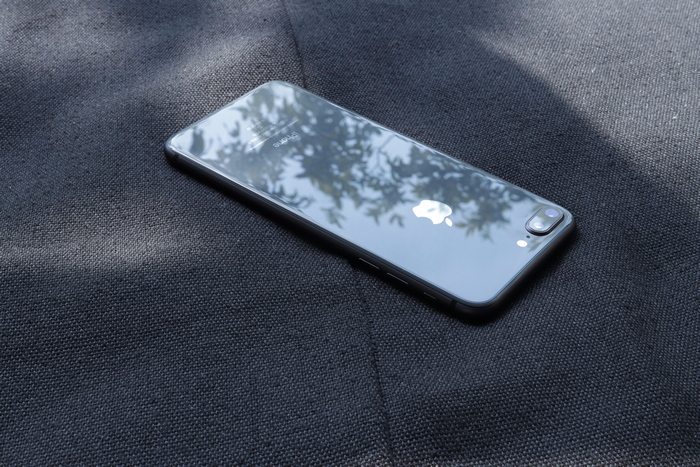
Two of the most valuable additions to the new iPhone 8 Plus is wireless and fast charging support. These features have been available across certain Android smartphones for years now, but we’re still glad Apple has actually decided to implement it into their devices. Sure, it’s been a long wait, but it’s definitely worth the wait, as the 8 Plus can be fast charged from 0 to 50% in just 30 minutes. That being said, you simply can’t fast charge your iPhone 8 Plus with the power adapter that’s provided in the box. You’ll have to make use of Apple’s official 29W, 61W or 87W power adapters, or you can even make use of an equivalent third-party wall adapter with support for USB Power Delivery. This is kind of disappointing, as most of the competitors provide a fast charger in the box with the smartphones, but we’re guessing Apple is just trying to be Apple by milking as much money as they possibly can.
As far as wireless charging is concerned, Apple makes use of the hugely popular Qi wireless charging standard, so you’ll need to purchase an additional third-party wireless charger to make use of this feature. It’s worth noting that Apple is working on their own wireless charger called AirPower that lets you charge multiple devices like the iPhone, Apple Watch and AirPods simultaneously without any hassle, but you’ll have to wait until next year to get your hands on one of them.
iPhone 8 Plus: Definitely Not A Looker
The iPhone 8 Plus is a great phone and there’s no doubt about that. The problem here is that it doesn’t look or feel like a 2017 smartphone, and that’s probably why not many people are excited about it. In a year of bezel-less devices like the Galaxy S8, Mi Mix 2 and the LG V30, we’re looking at a 3-year old design with the same huge forehead and chin. Well, the announcement of the radically redesigned iPhone X might be another big reason that’s stopping people from going for the 8 Plus.

Looks aside, you’ll certainly be impressed with what this new smartphone has to offer. After all, it packs the fastest chip that you’ve ever seen in a smartphone and the performance improvements will be immediately noticeable if you’re upgrading from an iPhone 6S or older device. It has even got one of the best cameras ever in a smartphone, and with Portrait Lighting, you can play around with some AI-based lighting effects to take make you look like some sort of a professional photographer. If you haven’t used a smartphone with a dual-camera setup just yet, head over to the nearby Apple store and try out the iPhone 8 Plus for yourselves, as we’re sure that you’ll be spellbound upon noticing how accurate the bokeh effect actually is.
Alright, I admit the fact that Apple is pretty late in the wireless and fast-charging game, but it’s never late than never isn’t it? iPhone users have been patiently waiting for this feature to arrive, and it’s finally over. However, we don’t really like the fact that Apple forces you to shell out a hundred dollars more on top of the phone’s price for using wireless charging and fast charging. All in all, if you’ve managed to fully read this article, you’ve probably realized the fact that the iPhone 8 Plus is indeed an evolutionary change rather than a revolutionary change, as the title suggests. If you’re looking to buy a smartphone that actually looks and feels like a 2017 smartphone, you might have to wait for the upcoming iPhone X that’s all set to hit the stores next month or the great iPhone 8 Plus alternatives available out there, like the Galaxy Note 8 or the LG V30.
Pros:
- A11 Bionic is the most powerful chip in any smartphone
- Top-of-the-line camera setup
- iOS 11 optimization
- True Tone display
- Wireless charging
- Fast charging
- Slightly better battery life than its predecessor
Cons:
- Ageing design
- Outdated Full HD IPS panel
- No headphone jack
- No fast charger provided in the box
- Expensive
SEE MORE: Xiaomi Mi Mix 2 Review: A More Practical Mix
iPhone 8 Plus Review: Evolution Over Revolution
This is the iPhone that people will be going for, especially if they can’t afford the $999 price tag of the iPhone X. After all, you’re getting same hardware, similar performance and almost the same camera, so unless you badly want that bezel-less screen, you’re not missing out on the more important stuff. As long as you’re using an iPhone 6S Plus or any other older device, the performance and camera improvements make it definitely worth the upgrade. If you’re planning to make the switch from Android to iOS, you need to be aware of all the disadvantages of this closed ecosystem. Sure, there are Android flagships that are better than the iPhone 8 Plus, but the iOS experience is quite unique on its own. So, what do you guys think about the iPhone 8 Plus? Would you rather shell out your hard-earned cash on this evolutionary upgrade rather than spending a grand on the radically redesigned iPhone X? Do let us know, by shooting your valuable opinions in the comments section down below.
Buy the new iPhone 8 Plus ($799)


















